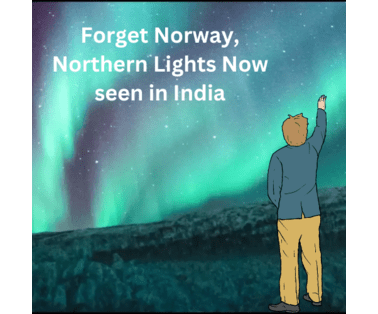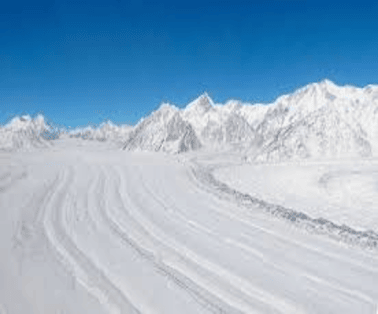The Indian Institute of Astrophysics in Bengaluru recently captured a rare occurrence of Northern Lights in India
Key Points On Northern Lights In India
- The Indian Astronomical Observatory above Mount Saraswati captured a rare phenomenon as a geomagnetic storm struck Earth’s magnetic field, creating unique auroras.
- Northern Lights was visible from as far as India’s Ladakh (34-36°N).
- This was the first time that the Northern lights in India was captured on camera by the Indian Astronomical Observatory
What Are Northern Lights?

What Causes Aurora Borealis (Northern Lights)?

Aurora Borealis Around The World
- Recently, the Northern Lights have been seen in parts of the world where they were never been seen before.
- This recent Northern Lights viewing, according to scientists, is because the sun let off a large burst of energy.
- Every 11 years, the Sun’s magnetic cycle ramps into overdrive. [Solar Cycle]
- At the height of this cycle, known as solar maximum, the Sun’s magnetic poles flip.
- This produces a greater number of sunspots, more energy and cause solar eruptions of particles.
- This activity on the sun – a solar storm or coronal mass ejection – causes the auroras.
- And this process increases and is more visible when the Sun goes through this natural, 11-year cycle.
Aurora Australis
- The Aurora Australis, also known as the Southern Lights, is a natural light display that can be seen in the southern hemisphere, similar to the Aurora Borealis.
- Because the southern hemisphere has fewer areas of land where the lights can be seen clearly, it is less well-known than the Northern Lights.
- Furthermore, the Aurora Australis can be seen most frequently in the Southern Ocean and Antarctica, which are both remote and difficult to reach for most people.
Visibility Of Aurora
- Aurora Borealis/Northern Lights are visible from the US (Alaska), Canada, Iceland, Greenland, Norway, Sweden & Finland.
- Aurora Australis/Southern Lights visible from Antarctica, Chile, Argentina, New Zealand & Australia.
Aurora on Other Planets
- The Hubble Space Telescope, the Cassini and Galileo satellites have observed such optical phenomena on Jupiter, Saturn, Uranus and Neptune.
- Venus and Mars have also witnessed below average aurora lights.
- On August 14, 2014, the SPICAM instrument (Mars Express) discovered an aurora on Mars. It was found at Terra Cimmeria.
- In July 2015, the first-ever interstellar aurora was detected. It was hovering around the brown dwarf planet LSR J1835+3259.
- The red aurora was a million times brighter than aurora borealis on the Earth.
Solar Storms
- Solar storms are disturbances in the Sun’s magnetic field that can release large amounts of energy into space in the form of charged particles and electromagnetic radiation.
- The most common types of solar storms include solar flares, coronal mass ejections (CMEs), and high-speed solar wind streams.
- The effects of solar storms on the Earth can vary depending on the strength and type of the storm.
To Download Monthly Current Affairs PDF Click here
Click here to get a free demo
Everything About CLAT 2025
Frequently Asked Questions
The Indian Institute of Astrophysics in Bengaluru recently captured a rare occurrence of aurora in Ladakh
Aurora in Southern Hemisphere is known as
Aurora in Southern Hemisphere is known as Aurora Borealis
On August 14, 2014, the SPICAM instrument discovered an aurora on??
On August 14, 2014, the SPICAM instrument discovered an aurora on Mars
Aurora literally means Dawn
What does the color of the lights depend on??
The color of the lights depend on the type of gas that interacts with the particles from the sun.



